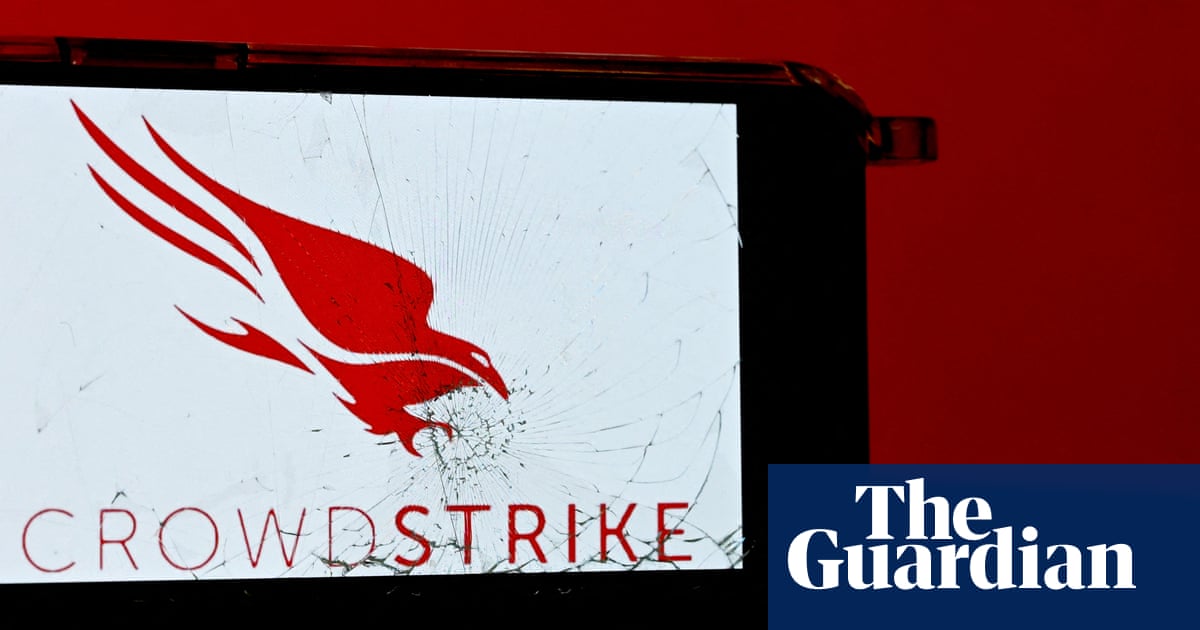The cybersecurity company that became a household name after causing a massive global IT outage last year has announced it will cut 5% of its workforce in part due to “AI efficiency”.
In a note to staff earlier this week, released in stock market filings in the US, CrowdStrike’s chief executive, George Kurtz, announced that 500 positions, or 5% of its workforce, would be cut globally, citing AI efficiencies created in the business.
“We’re operating in a market and technology inflection point, with AI reshaping every industry, accelerating threats, and evolving customer needs,” he said.
Kurtz said AI “flattens our hiring curve, and helps us innovate from idea to product faster”, adding it “drives efficiencies across both the front and back office”.
“AI is a force multiplier throughout the business,” he said.
Other reasons for the cuts included market demand for sustained growth and expanding the product offering.
The company expects to incur up to US$53m in costs as a result of the job cuts.
CrowdStrike reported in March revenue of US$1bn for the fourth financial quarter of 2025, up 25% on the same quarter in 2024, with a loss of US$92m.
In July last year, CrowdStrike pushed out a faulty update to its software designed to detect cybersecurity threats thatbrought down 8.5m Windows systems worldwide.
The outage caused chaos at airports, and took down computers in hospitals, TV networks, payment systems and people’s personal computers.
Aaron McEwan, vice-president of research and advisory at consultancy Gartner, said he was sceptical when companies announced AI efficiencies close to reduced revenue forecasts, as CrowdStrike had in March.
“I think particularly in the tech sector … it’s a way of justifying a reduction in the workforce because [of] a financial issue,” he said. “So either they’re not tracking well financially, or they’re trying to send a message to investors that good times are around the corner. So I’m immediately sceptical.”
McEwan said companies were facing pressure to deliver on the big investments made in AI.
“The productivity gains that we expect to see from AI just aren’t flowing through.”
Gartner research showed across workforces less than 50% of employees are using AI in their job, and only 8% of employees are using AI tools to improve productivity.
Toby Walsh, professor of artificial intelligence at the University of New South Wales, said CrowdStrike’s announcement was “pretty tone deaf” after the outage last year.
“They would have been better redeploying this 5% of people to emergency response and bug fixing,” he said.
Walsh said the market should expect more of these announcements in future.
“It’s pretty simple: more profits for companies, less work for workers. But we should learn from the first Industrial Revolution. If we stand up in solidarity, we can use these savings to improve quality and quantity of work for all.”
Niusha Shafiabady, associate professor in computational intelligence at the Australian Catholic University, said AI job replacements were an “unavoidable reality”.
“No matter what we believe is moral and right, this change will happen. Unfortunately, a lot of people will lose their traditional jobs to AI and technology,” she said.
“If [companies] see that they are saving money by using AI and technology and enhancing their services, they will ask their employees to leave. This is the reality.”
A World Economic Forum report in 2023 found nearly 23% of all jobs globally will change in the next five years due to AI and other macroeconomic trends. While 69m jobs are expected to be created, 83m jobs could be eliminated, leading to a net decrease of 2%, Shafiabady said.
McEwan said companies – tech companies in particular – would be looking for ways to use AI to reduce workforces over time.
“I have no doubt that there will be the emergence of companies that are able to reduce their workforce and substantially because of AI,” he said.
“It’ll depend on the type of product that they’re selling. But at the moment most companies would be wise to look at how they can use AI to augment their workforce rather than replace.”
Has your job been lost to AI? Get in touch – josh.taylor@theguardian.com
